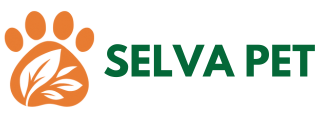How to Prepare Your Home for a Large Dog can seem a bit tricky, but don’t worry! You’ll learn everything you need to know to make your space big-dog friendly. From adjusting your furniture to dog-proofing your home, we’ll cover the important steps to keep your new furry friend happy and safe. Ready to dive in? Let’s get started on creating the perfect home for your big buddy!
Understanding the Unique Needs of Large Dogs
When I think about large dogs, I can’t help but feel a sense of awe. These gentle giants have unique needs that set them apart from their smaller counterparts. Their size means they require more space, both indoors and outdoors, for comfort and their physical and mental well-being.
Large dogs often need more exercise compared to smaller breeds. They thrive on activities that allow them to stretch their legs and burn off energy. This means daily walks, playtime, and even some off-leash fun in a safe area. Moreover, their nutritional needs differ; larger breeds often require a diet tailored to their size to prevent obesity and support healthy growth.
Additionally, large dogs can be prone to specific health issues, such as hip dysplasia and heart problems. Regular vet check-ups are essential. Monitoring their weight and ensuring they receive the right nutrition can significantly impact their health and longevity.
How to Prepare Your Home for a Large Dog: A Step-by-Step Guide
So, you’ve decided to welcome a large dog into your home. That’s fantastic! But before you bring your new furry friend home, let’s walk through the steps to prepare your space.
- Assess Your Space: Take a good look around your home. Do you have enough room for a large dog? Consider the layout of your living space. Open areas are ideal for them to roam and play.
- Secure Hazardous Items: Large dogs can be curious and, let’s be honest, a little clumsy. Secure any fragile items or valuables that could be knocked over.
- Designate a Dog Area: Create a specific area in your home that will be your dog’s space. This can be a cozy corner with a bed, toys, and water. It’s essential for them to have a personal space to relax.
- Remove Toxic Plants: Some plants are toxic to dogs. Research which plants are safe and remove any that could pose a risk.
- Consider Flooring: If you have hardwood floors, consider adding rugs or mats to provide better traction and prevent slips and falls.
- Install Baby Gates: If you have stairs or certain rooms you want to keep off-limits, baby gates can be a great solution.
- Dog-Proof Your Trash: Large dogs can easily knock over trash cans. Invest in sturdy, dog-proof trash cans to keep your home clean and safe.
- Check Your Fencing: If you have a yard, ensure your fence is high enough and secure. Large dogs can jump or dig, so a solid fence is crucial.
- Prepare for Bath Time: Bathing a large dog can be an adventure. Designate a space where you can easily wash them, whether it’s a bathtub or an outdoor area.
- Gather Supplies: Before your dog arrives, make sure you have all the necessary supplies. This includes food, water bowls, toys, a leash, and a comfortable bed.
By following these steps, you’ll create a welcoming environment that sets the stage for a happy life together.
Dog-Proofing Your Home: Essential Tips for Large Breeds
Dog-proofing your home is a must, especially with large breeds. They can be more destructive than smaller dogs due to their size and strength. Here are essential tips to keep your home safe and secure.
- Hide Electrical Cords: Large dogs can easily chew through cords. Use cord protectors or tuck them away to prevent accidents.
- Secure Cabinets and Drawers: Dogs are curious creatures. Ensure that cabinets containing cleaning supplies or other harmful items are securely closed or locked.
- Use Heavy Furniture: Ensure decorative items are heavy enough that a large dog can’t easily knock them over.
- Store Shoes and Clothing: Large dogs can easily reach shoes and clothing. Keep these items stored away to avoid potential chewing.
- Invest in Durable Toys: Large dogs need strong toys that can withstand their powerful jaws. Look for toys specifically designed for larger breeds.
- Be Mindful of Food Storage: Keep food stored in airtight containers and out of reach. Large dogs can easily get into things they shouldn’t.
- Check for Small Spaces: Ensure there are no small spaces where your dog could get stuck or trapped, including gaps under furniture or between appliances.
By taking these precautions, you can create a safe haven for your large dog, allowing them to explore and play without worry.
Creating a Dog-Friendly Space: Layout and Furniture Choices
Creating a dog-friendly space in your home is all about layout and choosing the right furniture. Here’s how to make your home more accommodating for your large furry friend.
- Choose Pet-Friendly Fabrics: Opt for fabrics that are durable and easy to clean. Microfiber or leather can be great choices, as they withstand wear and tear.
- Avoid Sharp Edges: When selecting furniture, consider pieces with rounded edges to prevent injuries if your dog bumps into them.
- Create Open Spaces: Large dogs need room to move around. Arrange your furniture to create open pathways where your dog can walk freely.
- Designate a Play Area: Consider setting up a specific area where your dog can play, including a space for their toys and a comfortable spot for them to rest afterward.
- Use Non-Slip Rugs: Ensure rugs are non-slip to help your dog maintain their footing and prevent falls.
- Incorporate Storage Solutions: Use baskets or bins to store toys and supplies, keeping your space organized and ensuring your dog has easy access to their favorite items.
By thoughtfully designing your home, you can create a comfortable and safe environment for your large dog to thrive.
Large Dog Safety Tips: Keeping Your Home and Pet Secure
Safety is paramount when you have a large dog. Here are some tips to keep both your home and your furry friend secure.
- Supervise Playtime: Always supervise your dog during playtime, especially with children. This ensures everyone stays safe and happy.
- Use a Leash: When outside, always keep your dog on a leash unless in a secure, fenced area. This prevents them from running off or getting into trouble.
- Invest in a Crate: A crate can be a safe space for your dog when you’re not home, providing them with a secure environment and preventing accidents.
- Teach Basic Commands: Training your dog to respond to basic commands like sit, stay, and come can be lifesaving, helping to keep them safe in various situations.
- Regular Vet Check-Ups: Ensure your dog receives regular veterinary care to catch any potential health issues early on.
- Be Mindful of Weather: Large dogs can be sensitive to extreme temperatures. Provide them with shelter from the heat or cold when outside.
- Secure Your Yard: Regularly check your yard for any potential escape routes, including checking fences and gates to ensure they are secure.
By following these safety tips, you’ll create a secure environment that protects both your home and your beloved pet.
Essential Supplies for Large Dogs: What You Need to Have
When welcoming a large dog into your home, having the right supplies is crucial. Here’s a comprehensive list of essential items you’ll need.
- Food and Water Bowls: Invest in sturdy, non-tip bowls that can accommodate your dog’s size. Stainless steel is a great option for durability.
- High-Quality Dog Food: Choose a dog food specifically formulated for large breeds to ensure they receive the right nutrients for their size.
- Comfortable Dog Bed: A spacious, supportive bed is essential for your dog’s comfort. Look for one that offers good support for their joints.
- Leash and Collar: A sturdy leash and collar are must-haves for walks. Consider a harness for added control and comfort.
- Toys: Stock up on durable toys designed for large dogs. Chew toys, fetch toys, and interactive toys can keep them entertained.
- Grooming Supplies: Depending on your dog’s coat, you may need brushes, nail clippers, and shampoo. Regular grooming is essential for their health.
- Crate: A large crate can provide a safe space for your dog when you’re not home. Ensure it’s big enough for them to stand, turn around, and lie down comfortably.
- First Aid Kit: Having a pet first aid kit on hand can be invaluable in emergencies. Include items like bandages, antiseptic wipes, and tweezers.
- Training Supplies: If you plan to train your dog, consider investing in training treats, clickers, and training books or guides.
By gathering these essential supplies, you’ll be well-prepared for your new large dog and set them up for success.
Large Breed House Adjustments: Making Room for Your New Friend
Adjusting your home for a large breed dog doesn’t have to be overwhelming. Here are some practical adjustments you can make to accommodate your new friend.
- Create Open Pathways: Rearranging furniture to create clear walking paths can help your dog navigate your home comfortably.
- Adjust Furniture Height: If you have low coffee tables or side tables, consider raising them to prevent your dog from knocking them over.
- Consider Dog Gates: Installing dog gates can help create boundaries and keep your dog in specific areas of the house.
- Modify Your Yard: If you have a yard, ensure there’s enough space for your dog to run and play. Remove any hazardous items that could pose a risk.
- Add Non-Slip Mats: If you have hardwood or tile floors, adding non-slip mats can provide better traction for your dog.
- Create a Designated Feeding Area: Set up a specific area in your home for feeding to help keep messes contained and make mealtime easier.
By making these adjustments, you’ll create a comfortable environment that meets the unique needs of your large dog.
Outdoor Space for Large Dogs: Ensuring Safe Play Areas
Having a safe outdoor space for your large dog is essential for their happiness and well-being. Here’s how to ensure your yard is a safe play area.
- Secure Fencing: Ensure your yard is fully fenced and that the fence is high enough to prevent your dog from jumping over. Regularly check for gaps or weak spots.
- Provide Shade: Large dogs can overheat quickly, especially in the summer. Make sure there are shaded areas in your yard where they can cool off.
- Remove Toxic Plants: Check your yard for any plants that could be toxic to dogs, including common plants like azaleas and oleanders.
- Create a Digging Zone: If your dog loves to dig, consider creating a designated digging area to satisfy their natural instincts while keeping your yard intact.
- Provide Toys: Keep outdoor toys available for your dog to play with, including fetch toys, balls, or even a kiddie pool for hot days.
- Regularly Clean the Area: Keep your yard clean and free of debris to prevent injuries from sharp objects or hidden hazards.
By ensuring your outdoor space is safe, you’ll provide your large dog with a fun and secure environment to play and explore.
Exercise Needs for Large Dogs: Keeping Them Happy and Healthy
Exercise is vital for large dogs, and meeting their needs is crucial for their health and happiness. Here’s how to ensure your dog gets the exercise they need.
- Daily Walks: Aim for at least one long walk each day. Large dogs benefit from consistent exercise to help manage their weight and energy levels.
- Playtime: Set aside time each day for play. Whether it’s fetch, tug-of-war, or just running around in the yard, playtime is essential.
- Dog Parks: If your dog is social, consider visiting local dog parks for off-leash play and socialization.
- Swimming: Many large dogs love water. If possible, take them swimming to provide a low-impact exercise option.
- Interactive Toys: Invest in toys that encourage physical activity. Puzzle toys or treat-dispensing toys can keep your dog engaged and active.
- Training Classes: Consider enrolling your dog in obedience or agility classes for both physical and mental stimulation.
By prioritizing exercise, you’ll help your large dog stay healthy, happy, and well-adjusted.
Training Tips for Large Dogs: Building a Strong Bond
Training is essential for large dogs, not just for obedience, but also for building a strong bond between you and your furry friend. Here are some effective training tips.
- Start Early: Begin training as soon as you bring your dog home. Early socialization and training can prevent behavioral issues later on.
- Use Positive Reinforcement: Reward-based training is the most effective method. Use treats, praise, and affection to reinforce good behavior.
- Be Consistent: Consistency is key in training. Use the same commands and cues to avoid confusing your dog.
- Keep Sessions Short: Large dogs can get bored or distracted. Keep training sessions short and engaging, around 5-10 minutes each.
- Incorporate Play: Make training fun by incorporating play. Use toys as rewards or incorporate games into your training routine.
- Be Patient: Training takes time and patience. Celebrate small victories and don’t get discouraged by setbacks.
- Seek Professional Help: If you’re struggling with training, consider hiring a professional dog trainer for valuable guidance tailored to your dog’s needs.
By focusing on training, you’ll strengthen your bond with your large dog and set them up for a lifetime of good behavior.



